France and love have lengthy been entwined, however not all French love tales led to bliss. These 9 (principally) tragic romances shook historical past, shaping kings, revolutions and even the destiny of empires.
For hundreds of years, France has honed its status as a land of affection. L’amour!
Traditionally, there’s a cause for all this.
In the course of the Center Ages, troubadours celebrated courtly love (l’amour courtois) – a romantic best crammed with chivalry. Later, Renaissance writers wrote about love, and the Romantic period sealed France’s picture because the land of ardour.
By the late nineteenth century, Paris had develop into synonymous with romance. The cobblestoned streets, iconic landmarks and bohemian cafés of the so-called Metropolis of Love attracted artists, writers and musicians.
A number of the greatest French novels or performs by authors like Gustave Flaubert, Victor Hugo, Alexandre Dumas and Edmond Rostand made waves on the planet of romantic French literature.
The Eiffel Tower, inbuilt 1889, added to Paris’s romantic mystique.
The French language, typically referred to as “the language of affection,” was seen as melodious and flowing.
And French tradition – whether or not in artwork, vogue or delicacies – overflowed with themes of affection and need.
Even right now, there are many stereotypes of the French as fabulous lovers, or no less than, excellent seductors (or charmers), based mostly as a lot on delusion as actuality.
These 9 well-known French love tales helped form historical past
Behind the myths, there have been actual lovers – passionate, highly effective and generally even harmful.
These 9 well-known French love tales have been so highly effective that every, ultimately, helped form the historical past of France.
Nonetheless, they did not at all times finish properly…
1. Abelard and Héloïse (1115-1117)
Some of the well-known and beloved of those is the story of Pierre Abelard, an excellent thinker and theologian, and his younger and gifted pupil, Héloïse.
The 2 would admire one another intellectually and ultimately, this might result in love.
After which, tragedy: Héloïse would get pregnant.
They married secretly to keep away from scandal – Abelard was older, and able of authority over his scholar. Héloïse’s uncle, Canon Fulbert, had employed (and trusted!) Abelard, so this was an unacceptable betrayal.
Keep in mind, these have been the Center Ages, when love was “noble”, lofty (and sometimes chaste). The high-minded troubadours made certain love and girls could be idealized by their poetry.
Canon Fulbert was understandably incensed and arranged an assault on Abelard, who was caught, and castrated. The wedding broke up: Abelard grew to become a monk, Héloïse a nun, and each retreated into spiritual life.
However their connection didn’t finish they usually wrote passionate letters to one another for the remainder of their lives. The letters spoke of affection, religion and sacrifice and are among the most well-known love letters in historical past:
“Expensive Abelard, pity my despair! Was ever any factor so depressing! The upper you raised me above different ladies who envied me your love, the extra smart am I now of the lack of your coronary heart. I used to be exalted to the highest of happiness, solely that I may need a extra horrible fall.”
2. Charles VII and Agnès Sorel (1443/4-1450)
Love would quickly emerge from the shadows and even royal mistresses would come out into the open.
The primary of those was lady-in-waiting Agnès Sorel, whose magnificence and attraction caught the attention of King Charles VII: she grew to become the primary formally acknowledged royal mistress of a French king.
Charles VII was, by the best way, the identical king who met Joan of Arc on the Château de Chinon and gave her a military to combat the English.
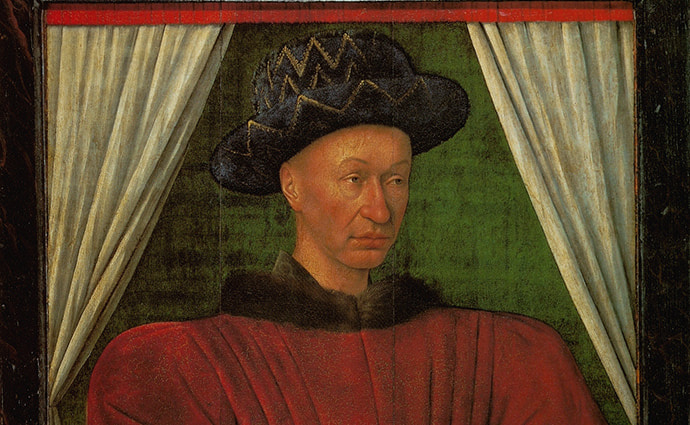 Charles VII: Agnès Sorel would after all present him with companionship, however she went additional by enjoying a task in court docket politics because the Hundred Years’ Conflict was winding down.
Charles VII: Agnès Sorel would after all present him with companionship, however she went additional by enjoying a task in court docket politics because the Hundred Years’ Conflict was winding down.Agnès wasn’t simply an idle mistress, and her presence would have an effect at court docket.
Historians imagine she pushed Charles VII to take stronger motion towards the English. This helped France reconquer Normandy and Guyenne, contributing to the French victory within the Hundred Years’ Conflict, a significant historic milestone.
Sorel’s relationship with Charles VII additionally prompted tensions at court docket.
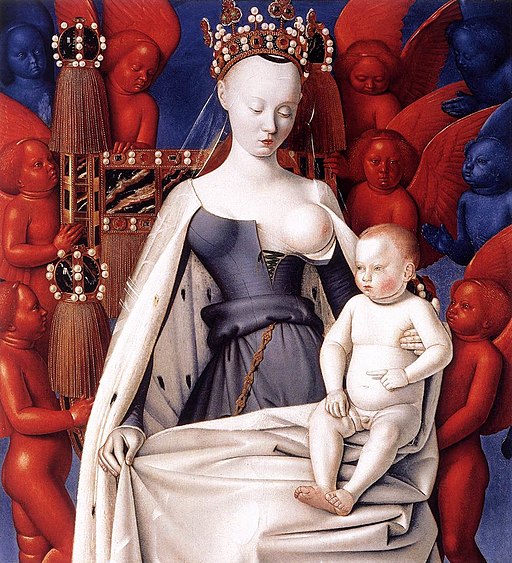 Past politics, Sorel additionally left a cultural legacy. She impressed Jean Fouquet’s well-known portray, Virgin and Little one Surrounded by Angels, the place she was depicted because the Virgin Mary – fairly a scandalous transfer on the time.
Past politics, Sorel additionally left a cultural legacy. She impressed Jean Fouquet’s well-known portray, Virgin and Little one Surrounded by Angels, the place she was depicted because the Virgin Mary – fairly a scandalous transfer on the time.The king’s son, the longer term Louis XI, despised her, a feud that grew to become so extreme that Louis was exiled from court docket in 1446. This pitted son towards father and weakened the monarchy, creating an influence wrestle that pressured factions to decide on between one or the opposite.
A stronger Charles VII meant his impatient and bold son must wait longer to train energy.
When Charles VII ultimately died in 1461, Louis wasted no time in dismantling his father’s administration and persecuting a lot of his closest advisors.
And whereas Agnès didn’t scheme towards Louis, no less than we don’t suppose so, Louis XI spent his reign making an attempt to centralize energy and stop any exterior affect (together with that of mistresses) from affecting royal selections.
3. François I and the Duchesse d’Etampes (1526-1547)
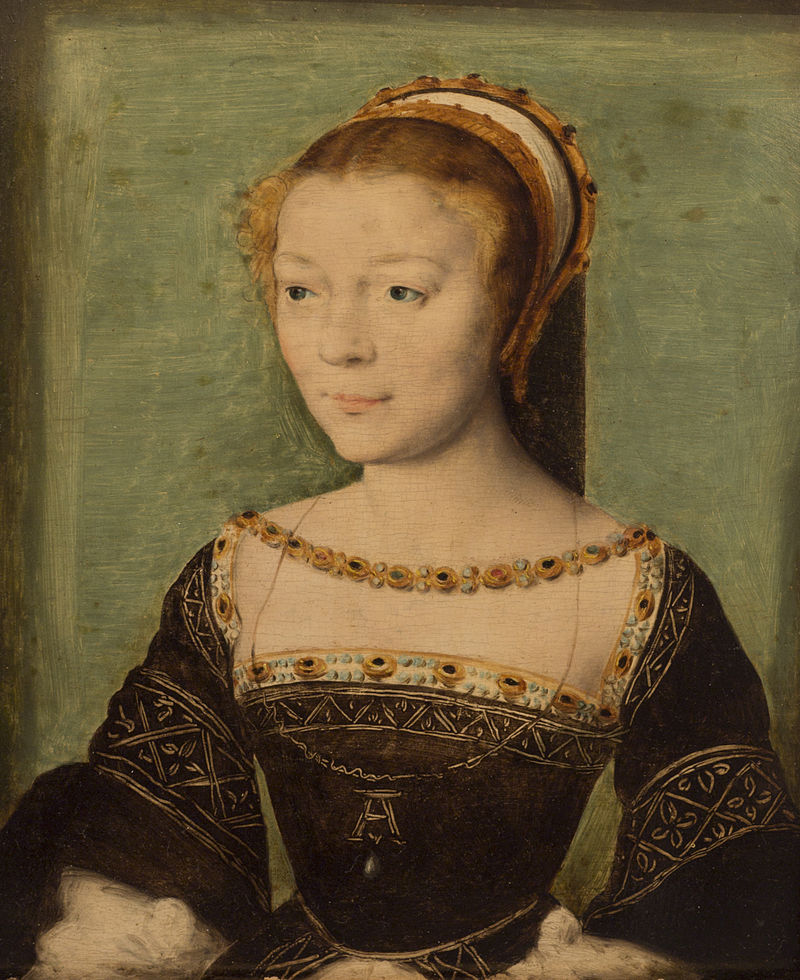 Anne de Pisseleu, Duchesse d’Etampes, promoted tradition and helped increase the royal library, which later grew to become the muse of the Bibliothèque nationale de France. Portray in oil by Corneille de Lyon.
Anne de Pisseleu, Duchesse d’Etampes, promoted tradition and helped increase the royal library, which later grew to become the muse of the Bibliothèque nationale de France. Portray in oil by Corneille de Lyon.Lower than a century later, one other mistress would entice the limelight and use her place to affect selections at court docket.
A well-educated noblewoman, Anne de Pisseleu, Duchesse d’Étampes, supported artists and thinkers in the course of the flourishing French Renaissance underneath King François I, encouraging his pure tendency to assist artists, writers and students.
Extra intriguingly, she supported reasonable Protestant concepts, serving to the king present better (albeit occasional) tolerance in the direction of them.
Sadly, this might anger highly effective Catholic teams at court docket and set the stage for future spiritual conflicts. This spiritual friction ultimately led to the French Wars of Faith that will erupt 15 years after the François I’s loss of life.
When he died, Anne’s affect ended in a single day.
His son Henri II despised her, as did Henri’s mistress, Diane de Poitiers, a robust Catholic.
Anne was involved about Diane’s rising affect and labored onerous to undermine her. She apprehensive Diane would change her as essentially the most highly effective girl in France… which is precisely what occurred.
Together with her lover Henri II on the throne, Diane grew to become the Quantity One girl of the realm, and orchestrated Anne’s downfall. Anne was exiled from politics and died in obscurity, reminding us {that a} royal mistress in Renaissance France had each extraordinary energy and extraordinary fragility.
4. Henri II and Diane de Poitiers (1538-1559)
Whereas Diane de Poitiers was a lady-in-waiting and governess to the royal youngsters at François I’s court docket, she constructed a particular bond with younger Henri, the longer term king. That bond would ultimately develop into a love affair, regardless of their 20-year age distinction.
Henri’s devotion to Diane was unwavering. He gave her main political duties and showered her with presents, most notably the Château de Chenonceau, which his spouse, Catherine de Medici, had so wished.
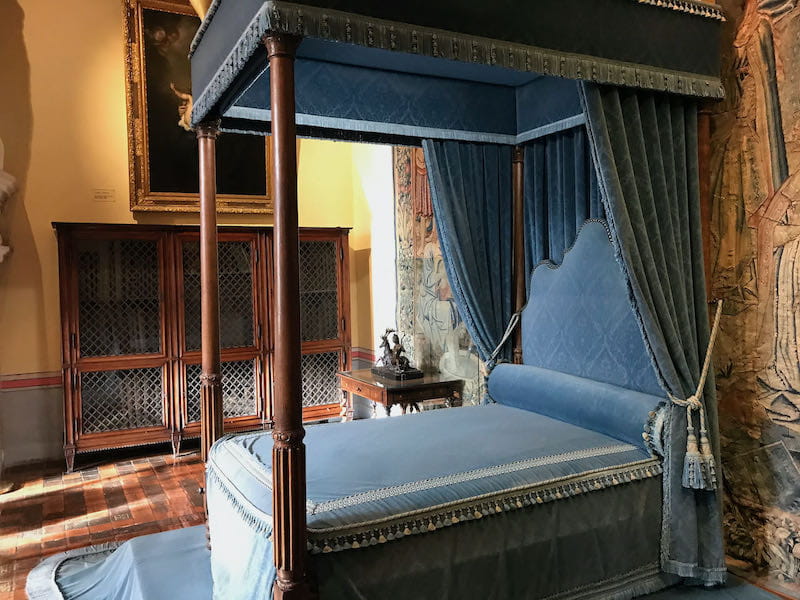 Diane’s bed room at Chenonceau ©OffbeatFrance
Diane’s bed room at Chenonceau ©OffbeatFranceDiane was referred to as a fantastic magnificence in her time, and have become just about a co-ruler with Henri II, whom she supported and helped. She managed entry to him, influenced state selections – and even signed state paperwork alongside him.
Many at court docket feared and resented her affect over the king, particularly the queen, who was conscious of the affair however knew there was little she might do about it.
So long as the king was alive, Diane’s place was unshakeable.
When Henri died in a jousting accident in 1559, his spouse Catherine jumped on the chance to reclaim Chenonceau, forcing Diane to return to her private property, the Château d’Anet.
Diane would spend the remainder of her life in exile, struggling the identical destiny at Catherine’s arms as she herself had imposed years earlier on the Duchesse d’Étampes.
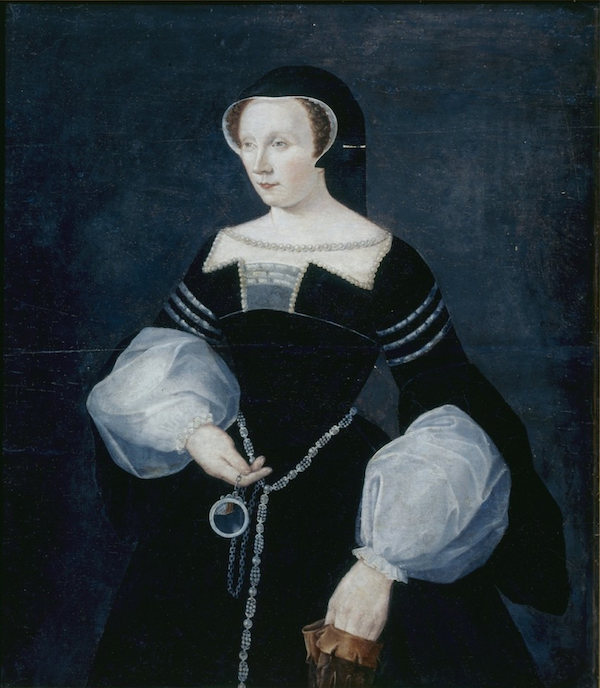
No royal mistress till then had equalled Diane in affect.
She elevated the position of mistress to near-sovereign standing.
She didn’t simply affect the king – she nearly ruled alongside him, changing into extra highly effective than the queen.
Not like Anne de Pisseleu, who principally influenced diplomacy and non secular coverage underneath François I, Diane’s powers have been extraordinary for a mistress on the time.
Due to her affect on politics, the highly effective and really Catholic de Guise household remained in favor, which might later affect the Wars of Faith.
5. Voltaire and Émilie du Châtelet (1734-1749)
Not all lovers influenced historical past by politics.
One relationship which made cultural and mental historical past was that of Voltaire and Émilie du Châtelet.
Voltaire’s writing and considering had big impression on the French Revolution, and his beliefs in freedom of expression and non secular tolerance proceed to affect us right now.
As for Émilie du Châtelet, she was one of the crucial good thinkers of her time, a mathematician and physicist who grew to become Voltaire’s lover and mental companion.
After entering into political bother in Paris, Voltaire sought refuge within the Château de Cirey, the place he and Émilie went about their scholarly pursuits. The fortress, by the best way, belonged to Émilie’s husband, who didn’t appear to thoughts the additional visitor. He was away typically as a army officer and Voltaire did, in any case, pay for renovations on the château.
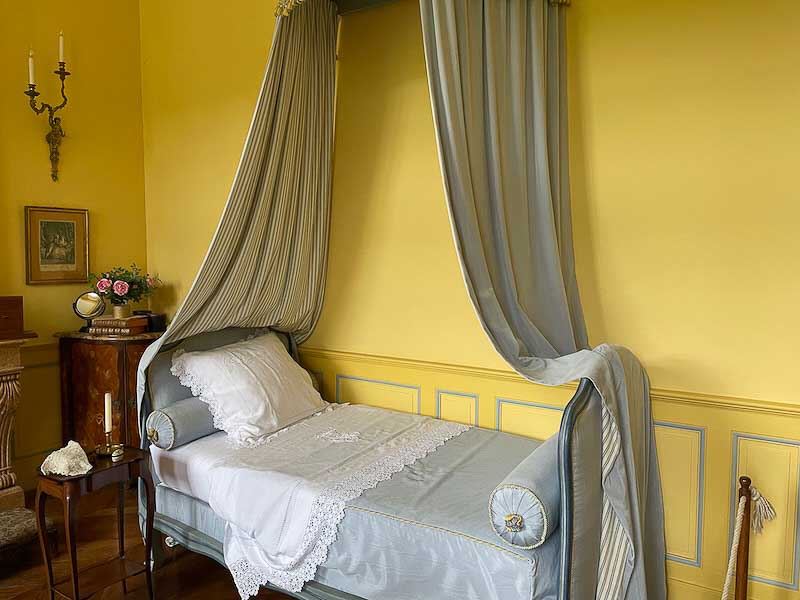 Émilie’s bed room on the Château de Cirey ©OffbeatFrance
Émilie’s bed room on the Château de Cirey ©OffbeatFranceThe connection between Voltaire and Émilie would final 15 years.
The couple remodeled Cirey into an mental hub, amassing books and conducting scientific experiments.
Émilie translated Newton’s Principia Mathematica into French – the primary and nonetheless greatest translation of the work, whereas Voltaire, influenced by her experience, wrote Parts of the Philosophy of Newton, which performed a key position in making Newtonian physics fashionable in France.
This collaboration contributed to shifting the Enlightenment ahead in France.
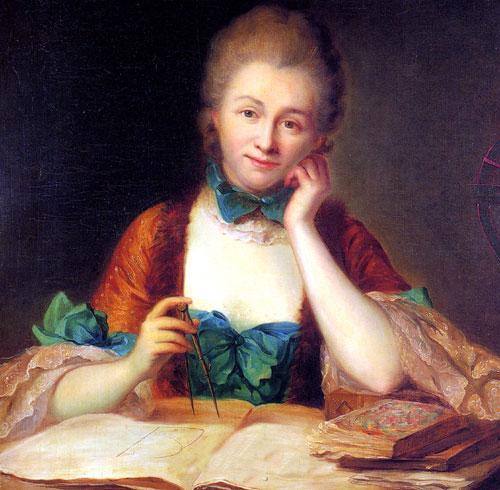 Emilie du Châtelet at work
Emilie du Châtelet at workBy excelling in fields dominated by males, Émilie challenged the gender norms of the time and inspired Voltaire to develop his personal critiques of faith and the monarchy. This helped weaken each and fueled revolutionary considering.
She additionally helped form currents that will floor within the Revolution’s (flawed) beliefs of equality.
Collectively, the couple helped create an atmosphere the place questioning political and non secular authority grew to become more and more acceptable.
6. Marie Antoinette and Axel von Fersen (1778-1791)
Marie-Antoinette was marched (properly, horse-and-carted) to the guillotine 9 months after her husband Louis XVI suffered the identical destiny in the course of the French Revolution.
He might have been her husband, however he wasn’t the one one pricey to her coronary heart: she is believed to have had a long-lasting relationship, presumably romantic, with rely Axel von Fersen, a Swedish nobleman and diplomat.
They met at a masked ball, and he grew to become a frequent customer at court docket, corresponding together with her frequently.
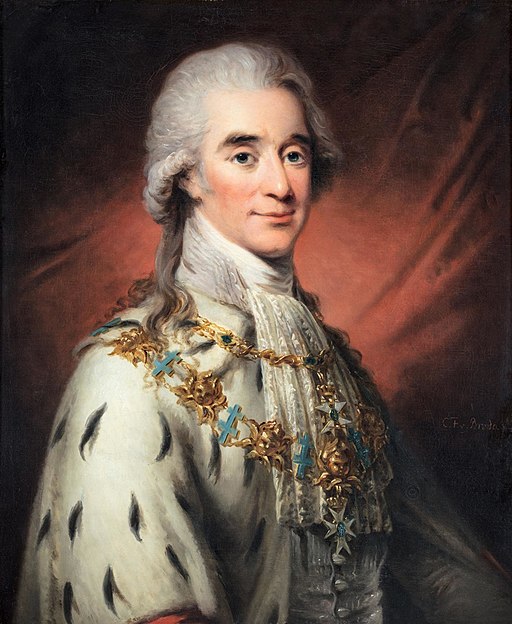 Axel von Fersen, intimate pal or maybe lover of Marie-Antoinette. Oil portray by Carl Frederik von Breda
Axel von Fersen, intimate pal or maybe lover of Marie-Antoinette. Oil portray by Carl Frederik von BredaTheir relationship stays one of many nice unknowns of French romantic historical past.
Some historians imagine it may need been sentimental and even sexual, whereas others insist it was an intense however platonic friendship. We might by no means know, however the relationship contributed to Marie-Antoinette’s picture as a scheming queen extra loyal to foreigners than to France.
That did not cease Fersen from making an attempt to assist the whole royal household escape Paris in the course of the Revolution. The escape failed, however not due to Fersen – he had prompt a lighter, sooner carriage however Marie-Antoinette insisted on a bigger one.
The tried escape branded the monarchs as traitors: whereas a constitutional monarchy had been into consideration, the flight try modified folks’s minds and more and more, there was speak of abolishing the monarchy altogether.
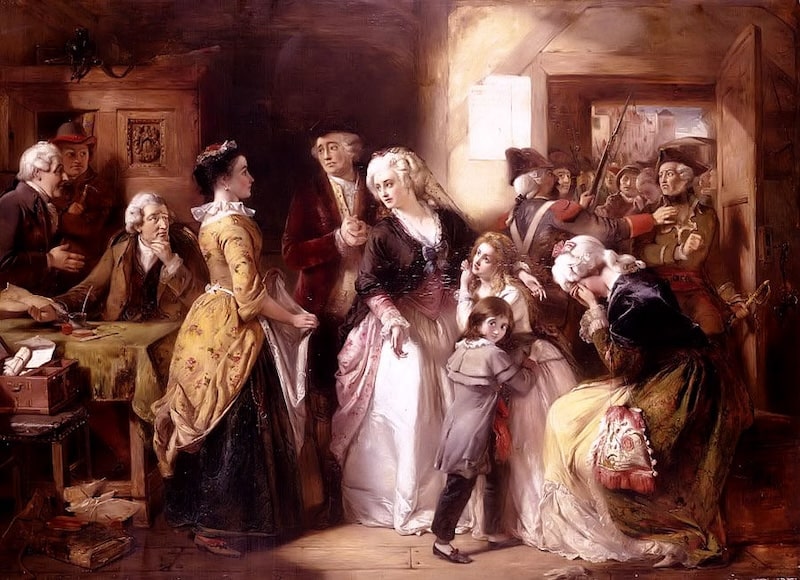 Louis XVI and his household being arrested at Varennes after making an attempt to flee Paris. Portray by Thomas Falcon Marshall
Louis XVI and his household being arrested at Varennes after making an attempt to flee Paris. Portray by Thomas Falcon MarshallHad the escape succeeded, the king may need gathered international assist from overseas and launched a counter-revolution, delaying the collapse of the monarchy.
Marie-Antoinette’s relationship with Fersen might not have prompted the French Revolution, nevertheless it did assist velocity issues up.
As for Fersen, he outlived Marie-Antoinette by 17 years but in addition died violently by the hands of a mob in Sweden throughout unrest there.
7. Camille and Lucile Desmoulins (1784-1794)
One other highly effective relationship with a revolutionary backdrop was that of Camille and Lucile Desmoulins.
Camille, an influential journalist, first met Lucile Duplessis in 1784 when she was simply 11, and he was in his early twenties. He ultimately fell in love together with her and waited till she (barely) reached maturity (at 17) earlier than marrying her, in a ceremony attended by revolutionary luminaries equivalent to shut pal Robespierre.
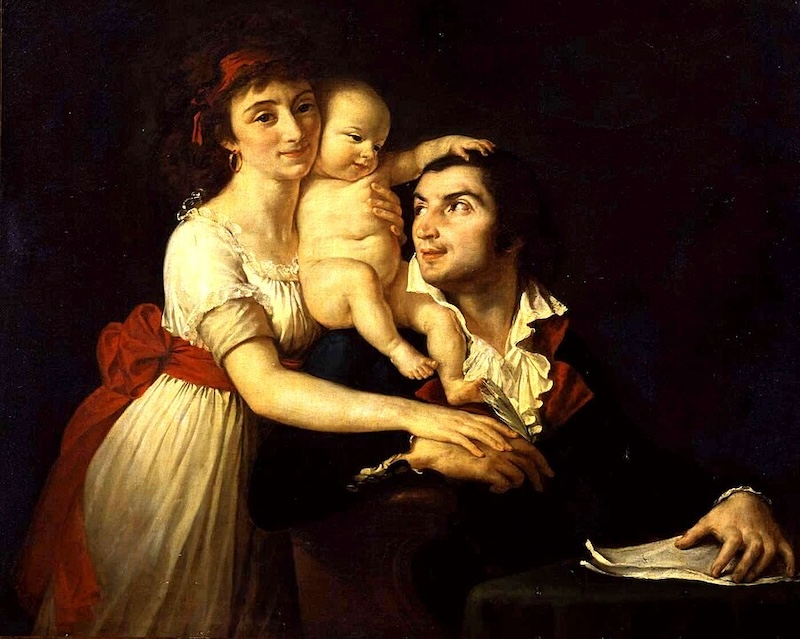 A revolutionary couple: Lucile and Camille Desmoulins, and their son Horace. From the workshop of Jacques-Louis David.
A revolutionary couple: Lucile and Camille Desmoulins, and their son Horace. From the workshop of Jacques-Louis David.They have been fairly the zealous revolutionary couple, attending political occasions collectively. She typically documented her experiences and her (passionate) letters give us a peek into society and politics on the time.
She additionally influenced Camille’s considering, and certain steered him in the direction of extra reasonable positions. As soon as a fiery revolutionary, Camille ultimately turned towards the Revolution’s excesses and mass executions in the course of the Reign of Terror.
He was arrested for treason and executed, regardless of Lucile’s efforts to free him – for which she herself was arrested and guillotined. This confirmed how completely uncontrolled the Revolution had develop into.
Had his push for much less brutality succeeded, the Reign of Terror may need been shortened (it lasted 10 months from 5 September 1793 to twenty-eight July 1794). As an alternative, it led to his downfall, turning key revolutionaries towards him.
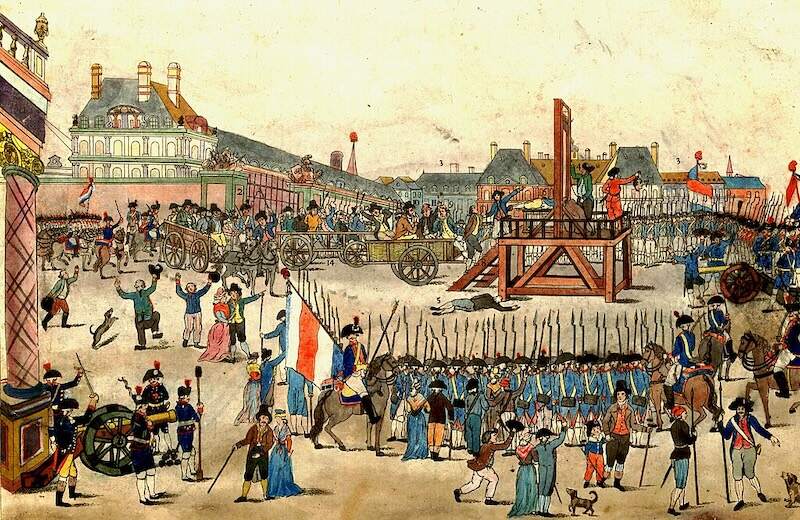 Robespierre’s execution in the course of the Reign of Terror
Robespierre’s execution in the course of the Reign of TerrorThe impression of the Desmoulins’ tragic love story can be symbolic: whereas they paid the final word worth in one among historical past’s most tumultuous durations, their story additionally demonstrates how even essentially the most romantic beliefs couldn’t survive the violence of the Revolution.
8. Napoleon Bonaparte and Joséphine de Beauharnais (1795-1809)
One other luminary whose status was constructed on the ashes of the Revolution was Napoleon Bonaparte.
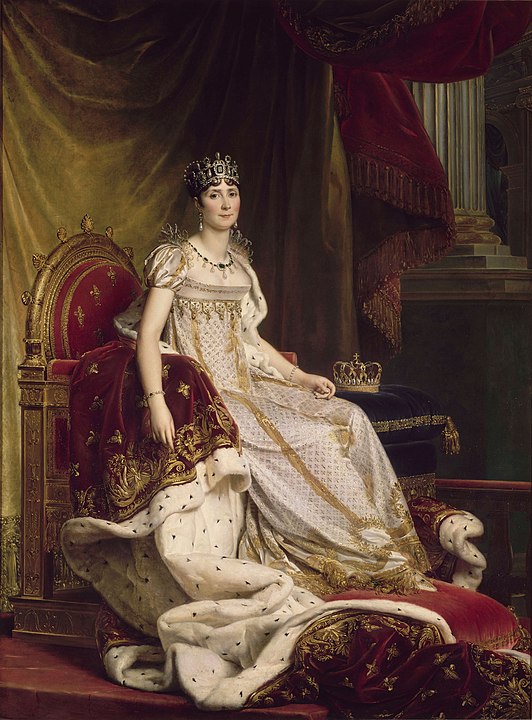 Oil portray of Empress Josephine by François Gérard
Oil portray of Empress Josephine by François GérardHis relationship with Joséphine de Beauharnais was a passionate, politically important, and finally tragic love story that formed the course of French historical past.
When Napoleon met Josephine in 1795, she was a widow and socialite (with a number of notable lovers) and he was nonetheless a comparatively obscure Corsican officer (though his title was getting round).
He fell deeply in love they usually married a 12 months later. Napoleon left for warfare, and whereas he was away he wrote passionate letters to her, till he discovered about her fairly public infidelities. The letters would develop into cooler…
Nonetheless, they stayed married, and he or she grew to become empress in 1804, serving to Napoleon navigate the political pitfalls of Paris as he expanded his energy.
However one factor stood of their manner: she couldn’t have any extra youngsters (past the 2 together with her first husband, nobleman Alexandre de Beauharnais). So Napoleon divorced her.
She was devastated however remained loyal to him. They continued writing to 1 one other and he would assist her even after his marriage to Marie-Louise of Austria.
His new spouse would give him a son, however Napoleon would by no means see him as soon as he was pressured into exile; his son would die of tuberculosis at 21.
As for Josephine, Napoleon would later admit that she was “the one girl I ever really beloved”.
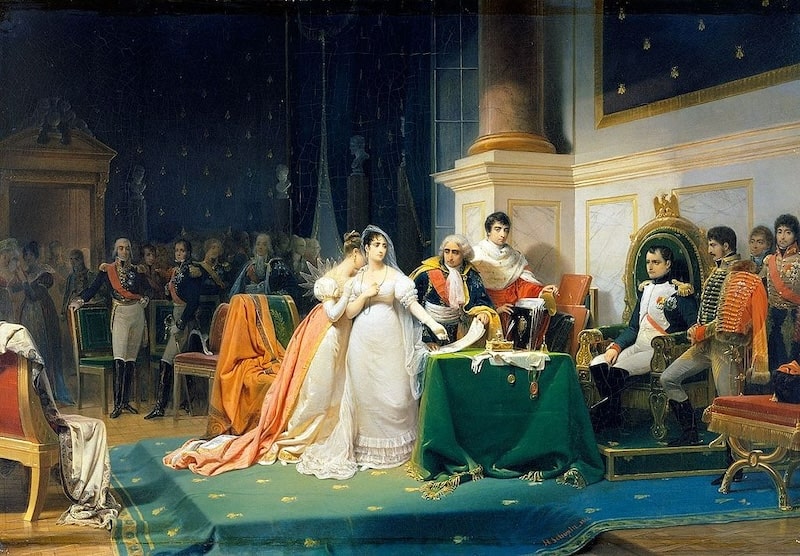 Napoleon and Josephine divorce in December 1809. Oil portray by Henri Frédéric Schopin.
Napoleon and Josephine divorce in December 1809. Oil portray by Henri Frédéric Schopin.The connection could be a think about politics and historical past.
Their marriage accelerated Napoleon’s social and political success – she helped legitimize his rule; with out her, the aristocracy may need challenged the fast rise of this minor Corsican.
Their divorce (and his remarriage) altered the course of European historical past. With out the Austrian marriage, Napoleon’s alliances in Europe may need performed out otherwise. He thought he was strengthening his relations with Austria by Marie-Louise; ultimately, Austria betrayed him.
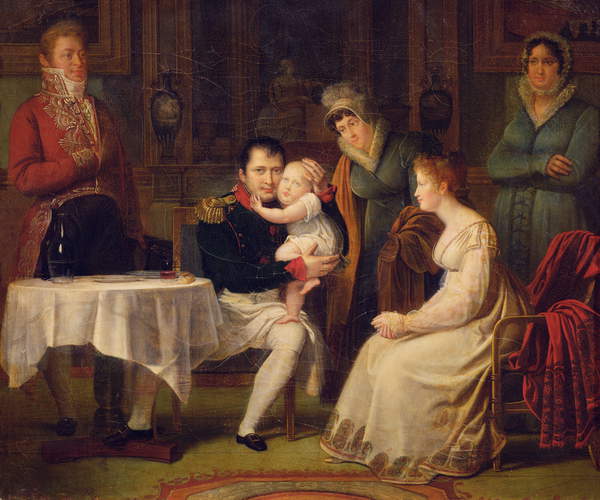 Napoleon, his second spouse Marie-Louise, and the King of Rome, as his son, Napoleon II, was recognized. Portray by Alexandre Menjaud
Napoleon, his second spouse Marie-Louise, and the King of Rome, as his son, Napoleon II, was recognized. Portray by Alexandre MenjaudHad he stayed married to Josephine, he wouldn’t have had an inheritor and would subsequently be weaker with out an inheritor. He was, in any case, a newcomer making an attempt to construct a brand new dynasty.
That stated, with Josephine, he may need centered extra on France and fewer on the remainder of Europe, avoiding the messy entanglements with Austrian politics which ultimately led to his downfall.
However maybe most vital of all: when he was exiled, Marie-Louise by no means fought for his launch and returned to Austria. Josephine, then again, was extraordinarily properly linked in France and it’s doubtless she would have fought tooth and nail for his launch.
Who is aware of what may need occurred had she succeeded…
9. Napoleon III and Eugenia de Montijo (1853-1873)
Napoleon I’s son might not have lived to inherit France’s imperial throne, however the emperor did have a nephew to hold on the custom. In an odd coincidence, that nephew was linked to his first spouse, Josephine.
Napoleon III was the son of his uncle’s youthful brother Louis and his spouse Hortense, who simply occurred to be Josephine’s daughter. (Protecting observe of France’s dynastic historical past typically requires headache medication…)
Anyway, Napoleon III fell in love with Eugénie de Montijo, a conservative and deeply spiritual Spanish (minor) noblewoman. He married her (she would don’t have anything to do with him till he proposed) they usually have been devoted to 1 one other, though, having carried out her responsibility, she apparently by no means shared his mattress once more after their son was born.
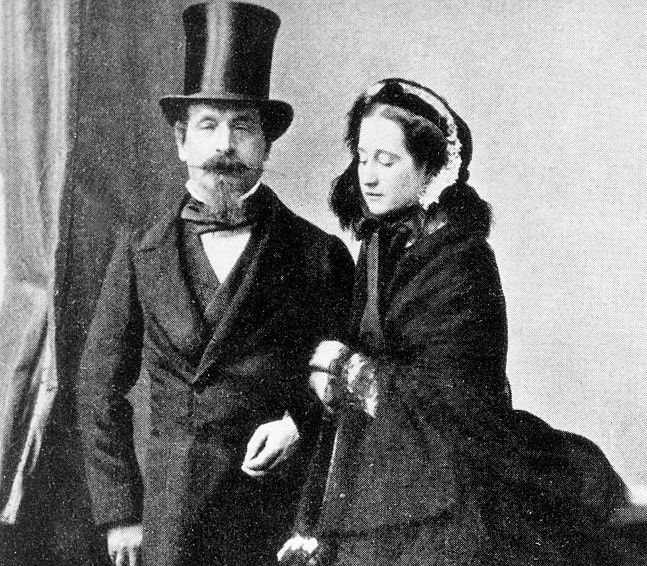
In counterpoint to Eugénie’s traditionalism, Napoleon III was pragmatic, liberal even, however he would transfer away from these leanings due to his spouse.
One might say Eugénie’s affect wasn’t significantly helpful.
Early on, she managed to alienate a number of of France’s allies who may need in any other case sided with the French in the course of the Franco-Prussian Conflict. She supported France’s disastrous intervention in Mexico, which ended with the execution of Emperor Maximilian I and critically tarnished France’s worldwide status. She opposed her husband’s efforts to enact liberal reforms, and maybe most damaging, she supported the Habsburgs of Austria, which remoted France and prevented any type of understanding with Prussia. Some suppose she might have even inspired France’s warfare with the Prussians, believing it will restore France’s glory.
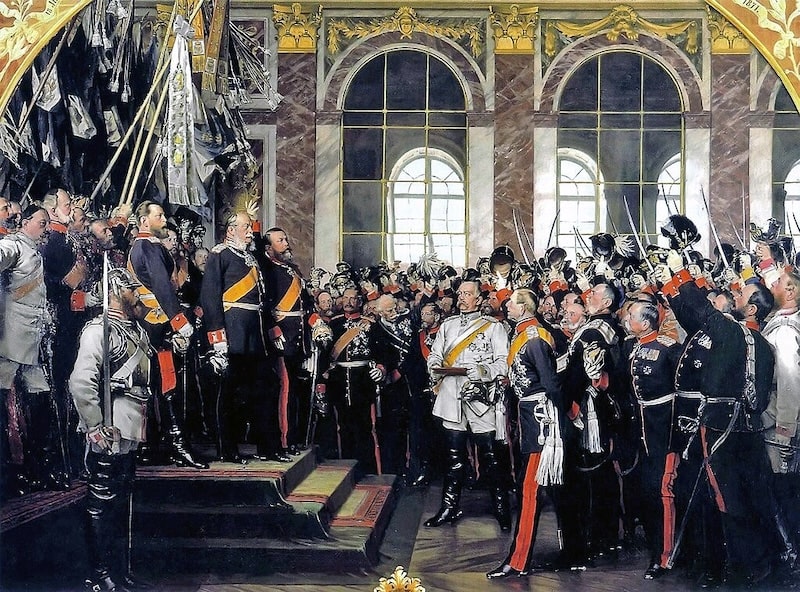 Proclamation of Prussian king Wilhelm I as German Emperor at Versailles, by Anton von Werner
Proclamation of Prussian king Wilhelm I as German Emperor at Versailles, by Anton von WernerNapoleon III was ailing by the point of the Franco-Prussian Conflict of 1870-1871, and left Eugénie to run the nation (she wasn’t as much as the job) whereas he went to the entrance.
The nation was humiliated at Sedan, Napoleon III was captured, and the empire collapsed, ending the Bonaparte period as soon as and for all*. France was plunged into political turmoil, setting the stage for each Germany’s unification and rise, and the violence of the Paris Commune, all of which shifted Europe’s steadiness of energy for many years.
*Even right now, there are those that would love nothing higher than a return to the empire underneath one among Napoleon’s offspring, maybe Jean-Christophe, Prince Napoléon, a descendant of Napoleon’s youthful brother Jérôme Bonaparte.
Earlier than you go…
There are such a lot of methods tales of affection are intertwined with French historical past, and what occurred within the bed room typically formed what occurred in politics or on the battlefield.
These 9 tales present that clearly…
Did you get pleasure from this text? I would love should you shared it!















